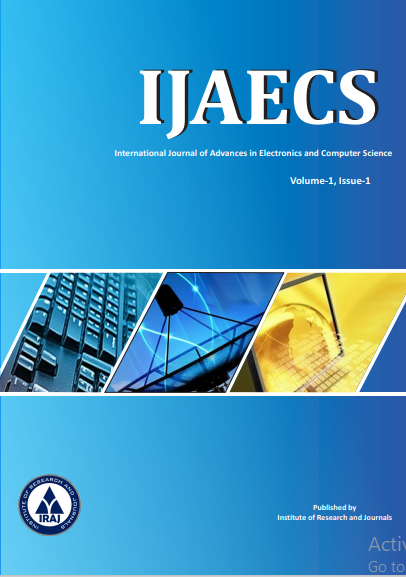Publish In |
International Journal of Advances in Electronics and Computer Science-IJAECS |
 Journal Home Volume Issue |
||||||||
Issue |
Volume-4,Issue-3 ( Mar, 2017 ) | |||||||||
Paper Title |
Electronic Learning Management System Based on Semantic Web Technology: A Review | |||||||||
Author Name |
Adel Al-Zebari, Subhi R. M. Zeebaree, Ali Selamat | |||||||||
Affilition |
Duhok Polytechnic University, Akre Technical Collegeof Informatics, Information Technology Department Nawroz University, College of Engineering, Communication and Computer Engineering Software Engineering Research Group (SERG), Knowledge Economy Research Alliance and Faculty of Computer Science & Information Systems, Universiti Teknologi Malaysia (UTM), 81310 Johor Bahru, Johor, Malaysia | |||||||||
Pages |
1-6 | |||||||||
Abstract |
Many web applications represented as Electronic-Learning Management Systems (EMLS), such as Moodle, e- Front, etc. are used to remote the educational courses. The educational resources will be available for users which can be accessed through the web anytime and anywhere. Thus, using EMLS will make the information available for the learners through the web. World Wide Web known as web 2.0 is used to create many sites such as blogs, wikis, and web applications. In addition to this, web 2.0 is used in many E-learning Systems (ELSs). However, due to the limitations of web 2.0 nowadays, web 3.0 is used in ELMS. The term Semantic Web (SW) was coined by Tim Berners-Lee, the inventor of the World Wide Web and director of the World Wide Web Consortium ("W3C"), who oversaw the development of proposed Semantic Web (SW) standards. The SW promised to enable a new generation of intelligent applications by providing programs and software agents with rich and effective ways to share information and knowledge. Hence, using SW in e-learning will make the information be understandable by machines and the communication between human and machine agents will be based semantically. One of the main purposes of using SW is to create ELMSs that provide a relationship between user information and the ELS-content. Consequently, the next generation of ELS will be based on SW. This paper represents an overview of the SW technologies Resource Description Framework (RDF) and Ontology Web Language(OWL) applied on ELMSs. A general comparison between traditional ELMSs and Sematic-ELMSs (S-ELMSs) is made. Then a detailed comparison among different previous researches about S-ELMSs is addressed to extract and conclude the significant features. The depended concepts of comparison include: ELMS elements, SW technologies, Framework contents, and SW applications. Keywords: E-learning, Ontologies, OWL, RDF, Semantic Web. | |||||||||
| View Paper | ||||||||||